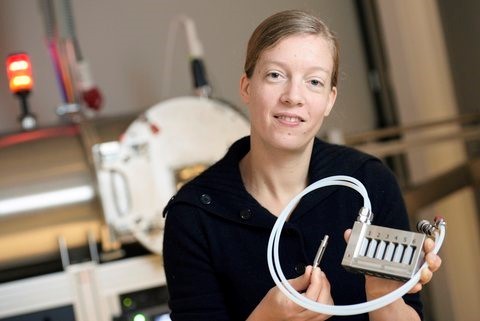This week Dutch, American and Canadian researchers present a major step in understanding antifreeze proteins, the proteins that hinder the growth of ice crystals. Artificial forms of these proteins are interesting for a whole range of applications – from de-icing spray and road salt to improved preservation of frozen food and organs.
The team, led by TU/e researcher Ilja Voets, will publish its findings this week in the leading journal PNAS on how we need a different type of antifreeze protein than previously thought for most applications.
The big scientific challenge is to duplicate these proteins and get a grip on how they work. For instance, to help improve the quality of frozen food or organs or to boost the resilience of plants against the freezing cold. They could also be used in a spray to de-ice car windscreens or aircraft wings, or as an additive to road salt (less salt needed) or ice cream (fewer calories).
Source: www.tue.nl
Photo: Bart van Overbeeke
Editing for Eindhoven News: Chuan
















